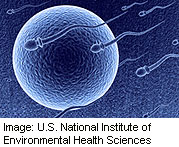- Navigating Your Midlife Crisis: Embracing New Possibilities
- City Raccoons Showing Signs of Domestication
- Mapping the Exposome: Science Broadens Focus to Environmental Disease Triggers
- One Week Less on Social Media Linked to Better Mental Health
- Your Brain Changes in Stages as You Age, Study Finds
- Some Suicide Victims Show No Typical Warning Signs, Study Finds
- ByHeart Formula Faces Lawsuits After Babies Sickened With Botulism
- Switch to Vegan Diet Could Cut Your Greenhouse Gas Emissions in Half
- Regular Bedtime Does Wonders for Blood Pressure
- Dining Alone Could Mean Worse Nutrition for Seniors
In Vitro Births Continue to Rise in U.S.


More babies in the United States are being conceived by in vitro fertilization, a new report shows.
Nearly 2,000 more infants were born with the help of this assisted reproductive technology in 2013, compared with 2012, the researchers reported.
Almost 175,000 in vitro fertilization (IVF) cycles led to the birth of slightly more than 63,000 babies, compared with just over 165,000 IVF cycles that led to the birth of slightly fewer than 62,000 babies in 2012.
Babies conceived through fertility treatments account for more than 1.5 percent of children born in the United States, according to the report from the Society for Assisted Reproductive Technology.
The society also said more women, regardless of age, chose to have a single embryo transferred. The rise in the number of women making this choice was greatest among women under 35. In that age group, 22.5 percent decided to have a single embryo transferred, compared with almost 15 percent in 2012.
“We are extremely encouraged to see the number of embryos transferred per cycle continue to go down and that more and more patients are choosing single embryo transfer,” said Dr. James Toner, president of the Society for Assisted Reproductive Technology.
“The goal of reducing the incidence of multiple pregnancies is extremely important, and patients can see from the data that fewer embryos transferred do not mean a lower chance of pregnancy,” he said in a news release from the group.
Trends noted in previous years continued in 2013, the report said. There were fewer embryos transferred per cycle among women of all ages, an increase in embryo implantation rates in all age categories, and an overall decline in multiple births.
The number of twins resulting from IVF fell from 12,436 in 2012 to 12,085 in 2013, and the number of triplets resulting from IVF dropped from 411 to 376.
More information
The U.S. National Library of Medicine has more about in vitro fertilization.
Source: HealthDay
Copyright © 2025 HealthDay. All rights reserved.










